Why are we still putting our children into time out?
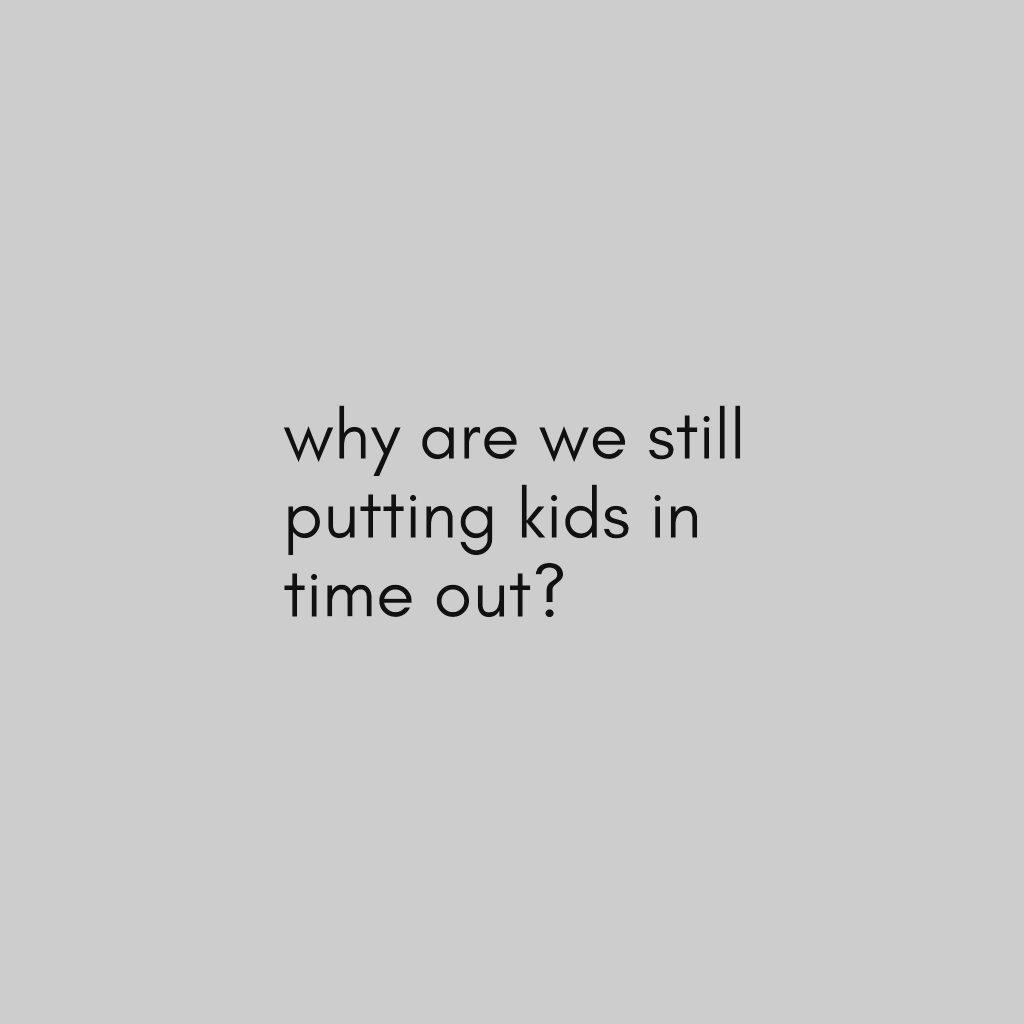
In my parent workshops, I ask parents if they remember a time when they were punished as a kid, maybe given a detention or not allowed to go out with friends. Then I ask if this made them feel more or less connected to the person who gave them the punishment.
When you are having a difficult moment, would you rather someone offer kindness or punish you?
Most people say that they resented the person who gave them the punishment and it didn’t make them want to do right by them.
Effectively this is what we are doing with our kids every time we put them in time out.
When kids act out it is likely a time they need more connection from us (= more love), rather than less connection.
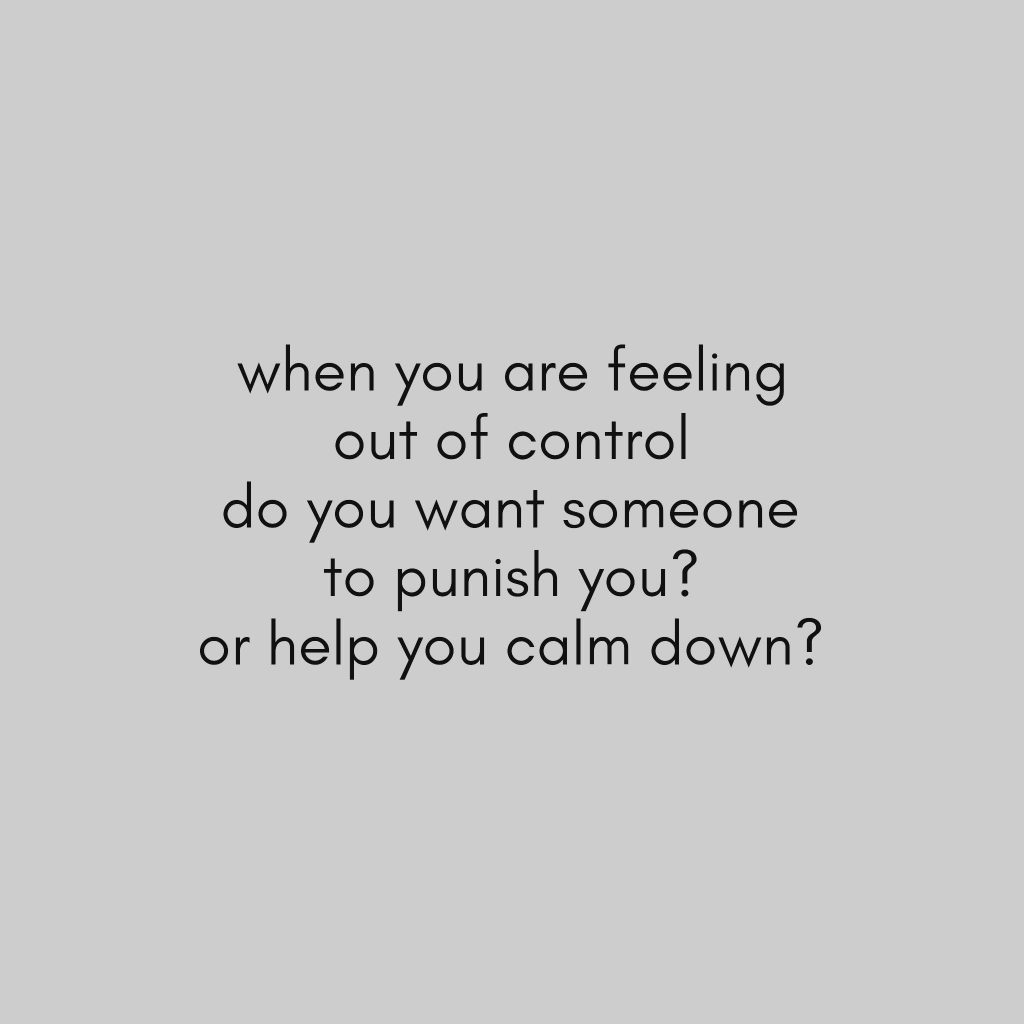
But what will I do instead?
So let’s look at alternatives to time out which we use in a Montessori approach.
If a child is throwing things on the floor, saying something unkind, hitting us or similar, we can be clear that it’s not ok to hit or throw. For example, “I’m not going to let you keep hitting me. It’s important for me to feel safe.”
Then instead of putting the child into time out “to think about it” it can be more effective to:
- help them calm down
- once they are calm, help them make amends
This is restorative justice (“how can I make this right?”) rather than punitive justice (taking something away, often our love).
People worry that helping them calm down is giving attention to the bad behaviour.
It’s not to condone their behaviour as ok. It’s showing them how to calm themselves down. Especially as we then help them to make amends once they are calm – so don’t skip this second step – so that they also learn responsibility for their actions.

1. Help them calm down
Helping our child calm down could look like:
- getting down to their level and telling them we are here if they need help
- offering them a hug and holding them as they go through all the emotions
- keeping them safe if they do not want a hug (and offering them a hug/help from time to time)
- offering some paper and pencils for them to show us how they feel
- offering a cushion for them to bang
- for a child over 3 years old, we could have a cosy place they like to go when they want to calm down (different to time out as the child goes there willingly and comes out when they are ready, not after a specified time). If they don’t want to go there to calm down, we could go there ourselves to keep ourselves calm instead or offer to go with them.
2. Once they are calm, help them make amends
Helping a child to make amends does not meaning forcing them to apologise. Often this will lead to an insincere apology.
Instead, we wait until they are completely calm and then help them to make amends. This may be:
- checking the other child is ok if they are hurt
- offering another child a cold cloth or tissue or plaster
- modelling an apology, “I’m sorry my child hurt you. Are you ok?”
- putting things back that have been thrown
- cleaning the walls or table if they have been damaged
- etc.
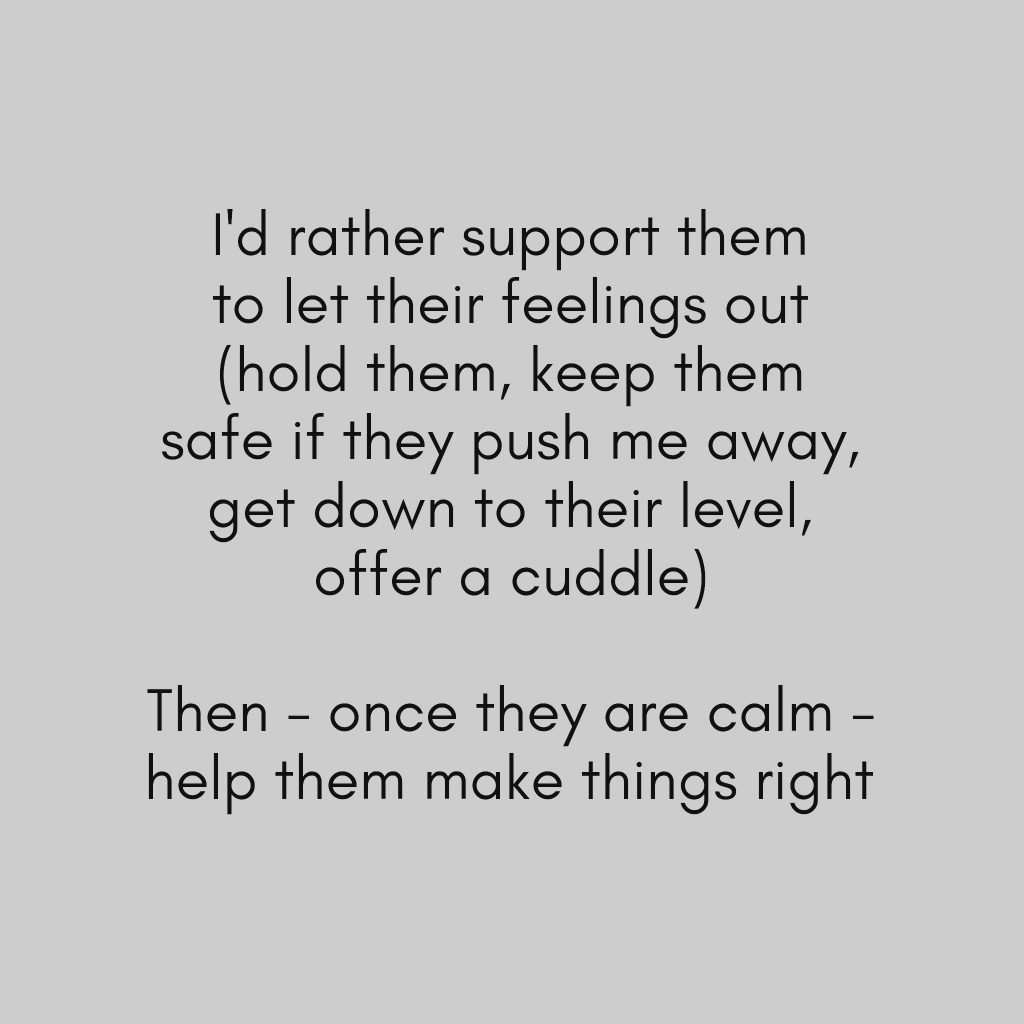
No quick fix
I’m not going to mislead you. This is a long term approach to raising children. It’s not a quick fix.
We are showing our children that we love them, even when they are at their worst.
And it’s probably when they need it the most.
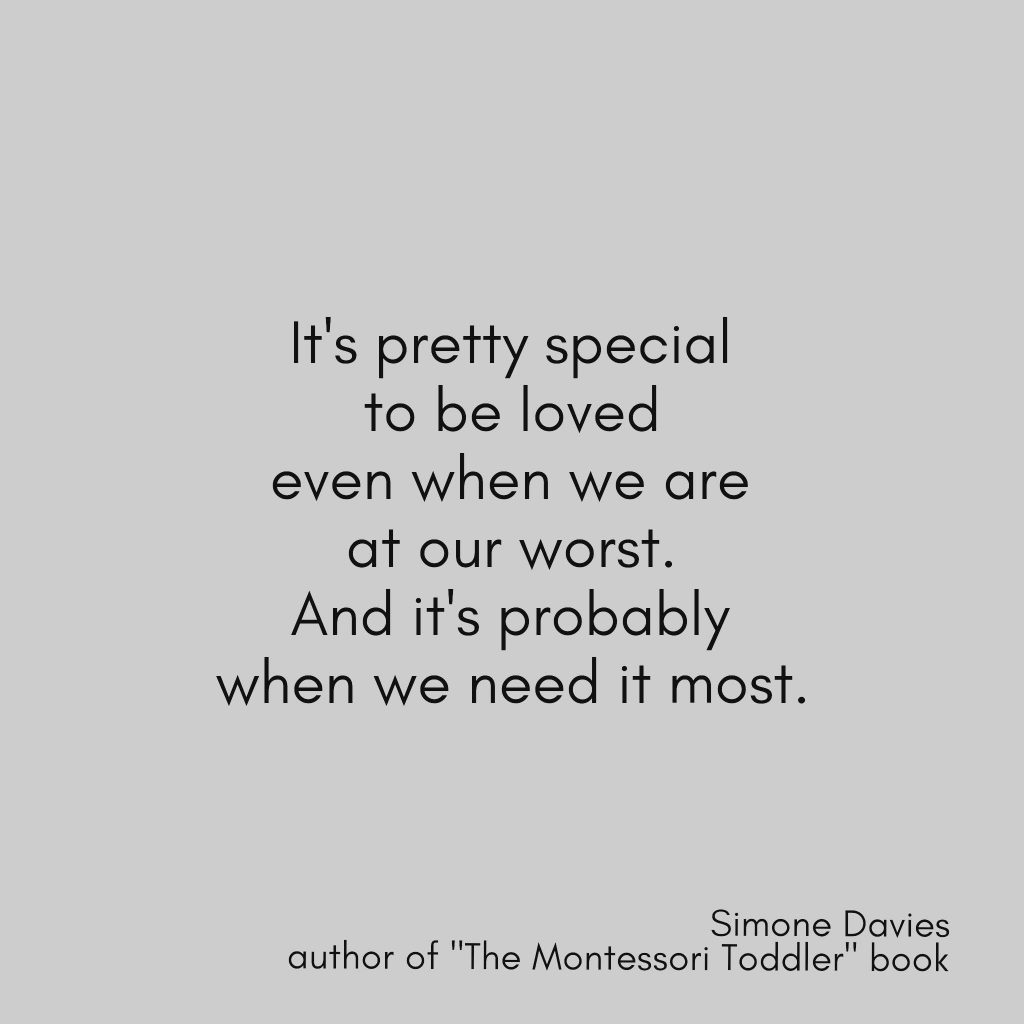
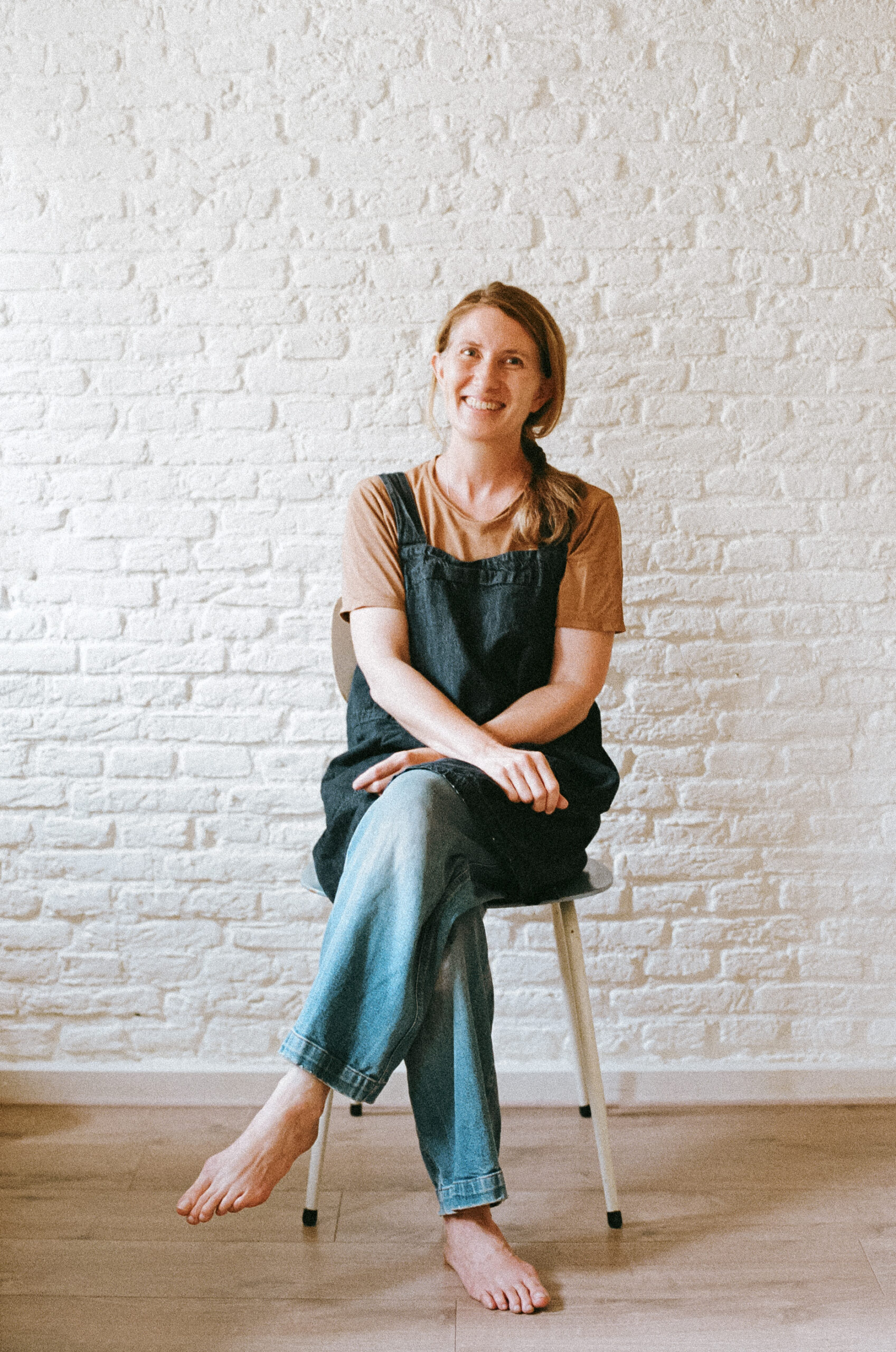
Simone Davies has more than 20 years’ experience as an AMI Montessori educator. Simone is the author of “The Montessori Toddler” and co-author of “The Montessori Baby” and “The Montessori Child” books, comprehensive guides to raising children in a Montessori way. She currently runs parent-child Montessori classes in Amsterdam at her school Jacaranda Tree Montessori. She also has a popular blog, instagram and podcast “The Montessori Notebook” and is mother to two young adults.